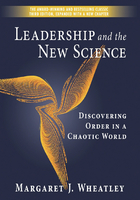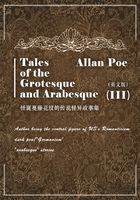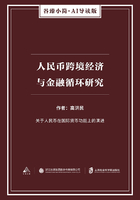INTRODUCTION THE WESTERN ISLAMIC WORLD AT THE DAWN OF THE TWENTIETH CENTURY
Just as Abraham Kuyper arrived at the Mediterranean shores in August 1905, the Treaty of Portsmouth was being negotiated in New Hampshire, putting an end to the Russo-Japanese war; simultaneously in Saint Petersburg, Count Sergei Witte was announcing the Russian constitution. Inspired by these events, anti-government protests erupted in Iran while Kuyper was celebrating Christmas in the Holy Land. By the time Kuyper returned to the Netherlands in the summer of 1906, the first Russian state duma had met and the unrest in Iran had escalated into a full-blown constitutional revolution. As Kuyper set to writing, Evelyn Baring, Lord Cromer, the British consul-general of Egypt, with whom Kuyper met on his visit there, resigned amid Egyptian demands for a constitution, and Young Turk revolutionaries forced restoration of the 1876 constitution in the Ottoman Empire, where Kuyper had spent several months. These extraordinary events, and the existence of broadly similar circumstances across northern Africa during Kuyper's tour there, set the daily context of his great trek around the Mediterranean and the deeper context of his reflections and writing back at home. He had a lot of company in wondering whether a general uprising of the Islamic world was at hand, in acknowledging that European imperialism had a prime part in stoking it, and in fearing that the rebellion would take a religious form-"Pan-Islam."
THE DESCENT OF COLONIALISM
The revolutionary changes of Kuyper's time were set in motion by events stretching back nearly fifty years. Russia had overrun Iran's Caucasus provinces and Central Asia, and Russian excavators had turned the port city of Baku, on the Caspian Sea, into the world's first oil boom town in the 1850s. Meanwhile Britain purchased from Iran's ruler, the shah, the rights to build telegraph lines there, the first of several such "concessions" arranged between that government and European powers. Britain and Russia competed for concessions in fishing, railroad building, banking, a lottery (later rescinded), and mineral rights. Iranians watched in consternation as the country's economic wealth was sold off to Europeans while its national debt nonetheless remained insurmountably high. The most infamous concession was a grant for oil exploration in Iran, awarded in 1901 to William Knox D'Arcy, a British subject. However, at Kuyper's time the 1890 concession for tobacco seemed the more onerous. It threatened thousands of Iranians' livelihoods, and seemingly everyone joined a boycott and nationwide protests that finally got it canceled.
While aspects of this story were peculiar to Iran, they were not wholly unique. The country's general financial and political weakness, the demands for limited monarchy and constitutionalism, and the inspiration taken from the victory of little Japan over powerful Russia galvanized the Iranian protesters, who finally brought down the shah in the revolution of 1906. Similar scenes played out across the whole western Islamic world at this time-even in its most powerful states, the Ottoman Empire and Egypt.
Once the Ottoman Empire became a debtor in European financial markets in the 1850s, its huge volume of international trade, seventy percent of which was with central and Western Europe, made the empire vulnerable to major market fluctuations. It had taken on its first foreign debts during the Crimean War (1853-56), using as collateral highly liquid assets such as the annual tribute from Egypt and the customs revenues of the major ports of Izmir and Salonika. Additional debt incurred thereafter was secured against general revenues. The crisis came when the Vienna stock market crashed in May 1873 and global wheat prices collapsed; the empire's revenue contractors could not meet their obligations to the Ottoman government. At the same time the government had no access to further credit and no means to relieve the pressure when drought and a bad harvest followed the next year. One thing led to another. The Ottoman government defaulted on its foreign debt. Violence broke out between villagers and landlords in Bosnia in the summer of 1875. There was Serbian and Bulgarian meddling in Bosnia, violence against Muslims in Bulgaria, a massacre of Bulgarians by Ottoman forces, and a short but disastrous Ottoman war with Russia (1877-78) that led to shocking losses of imperial territory on both the western and eastern rims of the Black Sea. The international Congress of Berlin (1878) settled the war and began sorting out the massive problem of Ottoman debt. Agreement was reached in December 1881 to create an international consortium called the Ottoman Public Debt Administration.[1]
Egypt, meanwhile, had its own separate arrangements with European financial powers. These dated from the same era, a boom period in Egypt, especially in cotton. Fueled by the search for alternate sources of raw cotton during the American Civil War, Egypt's revenues from cotton exports at the end of the 1860s were ten times what they had been at the beginning of the decade. Formally still an Ottoman province paying an annual tribute to Istanbul, Egypt had been virtually autonomous for decades, under a hereditary viceroy called the khedive. Even the cotton boom, however, could not keep up with Egypt's modernizing projects and Khedive Ismail's extravagant lifestyle. The most ambitious project was the Suez Canal. Built under abysmal conditions by conscripted Egyptian labor and financed partly by the Egyptian government and partly by French and British investors, the canal opened to great fanfare in 1869. By 1875 Ismail had sold off Egypt's 44-percent share and its 15 percent of eventual profits, yet even this was not enough to satisfy the country's creditors. As in the Ottoman Empire a debt commission was established, a consortium run by European creditors; on-site comptrollers were appointed by Britain and France as well to supervise the budget. When Khedive Ismail challenged the commission, it deposed him in 1879. Three years later a revolt erupted, led by Colonel Ahmed Urabi with broad support among the army, urban notables, and agrarian villagers. Brought into the government as minister of war, Urabi strove for far-reaching reforms, including creation of a national assembly to manage Egypt's finances and make political decisions. As conditions deteriorated, European creditors used the pretext of a riot in Alexandria (which Kuyper casts as an anti-Christian pogrom) to intervene in June 1882. Great Britain landed troops, seized the Suez Canal, and defeated Urabi's resistance forces by the end of the summer. Thus began a British occupation of Egypt that was to last more than seventy years.[2]
Across North Africa similar circumstances prevailed.[3] France had invaded and colonized Algiers as of 1830, and European rivalries spilled over into neighboring Morocco. In Tunis, the rulers (called beys) struggled to balance French, English, Italian, and Ottoman demands with their own wishes to develop the country's communications and public works infrastructure. A constitution, the first in the Muslim world, was issued by the Bey of Tunis in 1860, who hoped to bring local notables into consensus on funding modernizing projects. Many opposed it, however, for the limits it placed on their own authority, and some also for religious reasons; it was withdrawn three years later when a rebellion brought Ottoman intervention. Instead the bey raised funds by issuing bonds and contracting loans with European financial institutions. Given local political restraints, it was impossible for him to collect adequate revenues to make the payments. With Tunis deep in arrears, in 1869 an international finance commission was created, dominated by representatives of British, French, and Italian creditors. French-Italian rivalries brought a French invasion and occupation of Tunis in 1881, support having been secured at the Berlin Congress as quid pro quo for the British occupation of Ottoman Cyprus and a free hand for Italy on the North African coast of Libya.
As Kuyper observed, these colonial arrangements did accomplish some good, and they were not a simple matter of European control and native subservience. In Egypt, even if higher-paid British officials made the decisions, the colonial civil service was substantially staffed by native Egyptians. In Turkey, the Public Debt Administration staff was larger than the Ottoman finance ministry, and many native Ottoman civil servants built their careers working in it. In every case the various debt commissions negotiated more favorable terms with lenders, enabling lower payments and extended credit. In Egypt, payments on the debt declined from 60 percent of annual revenues before 1882 to roughly 25 to 33 percent of the budget after the British occupation. The budget even showed a surplus.[4] The conditions of village life improved under British administration. Forced labor and corporal punishment ended. Public education suffered because Lord Cromer did not wish to feed nationalism, yet newspapers were published and a healthy level of public discussion of issues prevailed, a noteworthy contrast to the situation in Turkey under Sultan Abdul Hamid's paranoid censorship. All over the region, foreign investment poured into communications infrastructure, especially railroad building and port facilities. Kuyper enjoyed the effects of this (and gave ample space to describing it) during his travels, taking the train from the brand-new Haydar Pasha Station, on the Asian side of the Bosphorus across from the old city of Constantinople, to Konya in November 1905. A few weeks later he sailed between two of the empire's great harbors, from Smyrna to Beirut, and then took the train from Beirut to Damascus via Baalbek. Several other rail lines operated too, as he noted, from Smyrna up the Meander Valley and from Istanbul to Ankara in Asia, and from Istanbul to Salonika and Manastir in Europe, as well as the famous Orient Express route through Sofia, Belgrade, Budapest, Vienna, and ultimately to Paris.
Yet there was a downside, as Kuyper observed as well. Development was uneven, since construction inevitably prioritized investor profits over national needs. National sovereignty was compromised. Railroads worked to commercialize agriculture by bringing produce and raw materials to market, but even though grain exports increased, production did not; Istanbul still imported flour. Manufacturing capacity did not improve either. The Public Debt Administration took about 13 percent of Ottoman revenues in 1903-04,[5] including among other things the annual tribute from Bulgaria, the revenues of the province of Eastern Rumelia, the state monopolies of tobacco and salt, taxes on alcohol, and in certain provinces, taxes on fish and silk.
The circumstances exacerbated existing tensions over class, ethnicity, and religion. At the time of Kuyper's visit to Algeria, Muslims outnumbered European settlers there eight to one but owned only 37 percent of the wealth. Muslims could not even leave their districts in Algeria without official permission.[6] Although the cotton boom dramatically increased raw cotton exports from Turkey and Egypt to Europe, it did nothing to make local textile industries more competitive. Investors in international trade became rich, and landowners did too as rural real estate values rose, but the boom made a much more modest impression on the Egyptian and Turkish laborers who worked the fields and took the product to market. In Tunis, Egypt, and the Ottoman Empire old treaty agreements known as the Capitulations gave European citizens limited "extraterritoriality," which included exemption from local taxation and, in most places, the right to settle legal matters in their own courts under their own laws. These rights were extended to the European companies and merchants' native clients too. In concrete terms this meant that a very large percentage of Ottoman, Egyptian, and Tunisian Christians-since that was who the Europeans preferred to work with-escaped the fiscal sovereignty of their own governments. Thus local Armenians, Greeks, and other Christian minorities became associated with the unfair advantages gained by European powers. There was great resentment, and there would be hell to pay.
As Kuyper observed, these changes exacted serious human costs as well. He related the Dinshawai incident, which took place in the Nile Delta as he was returning to Europe. British soldiers went hunting in that village's pigeon coops, and were set upon by the angry villagers whose birds they killed. In the ensuing scuffle some villagers were shot and one was beaten to death, while one of the soldiers collapsed and died. Lord Cromer's administration tried and hanged four of the villagers and flogged dozens of others.[7]
Tobacco offers another case in point.[8] The Ottoman Public Debt Administration received a monopoly on tobacco production in the Empire, an enormous windfall in a society where virtually everybody smoked. Indeed, tobacco accounted for 35 percent of all Public Debt Administration revenues. This monopoly was subcontracted to a multinational corporation, called for short the Régie Company, in a profit-sharing arrangement with the Ottoman government. Within the Empire the Régie Company controlled all aspects of tobacco production, from planting to sale. It even outlawed growing tobacco for personal use. Ottoman merchants could, however, sell tobacco abroad-provided they had a license granted by the Régie Company-except to Egypt, where the British administration monopolized sale. The Régie Company destroyed local Ottoman producers, who either went out of business or moved to the Nile Delta. It also destroyed thousands of jobs, even if it also employed thousands of Ottoman laborers. Ninety percent of its workforce was local (management was mostly European). Many of these jobs were in its vast security apparatus. Predictably, tobacco prices rose, and predictably also, smuggling thrived. The Régie Company's private militia did battle with smugglers and protesters in a brutal thirty-year civil war that took a toll of more than twenty thousand lives.
ISLAM AND OPPOSITION
Opposition to colonialism took a variety of forms in the lands Kuyper visited. The term "Pan-Islam" became popular in European languages in the 1880s after a French journalist used it in reporting on Muslim outrage at the French occupation of Tunis in 1881. It came to mean any anti-colonial political attitudes that were expressed in an overtly Islamic idiom. The term more or less matched the Ottoman Turkish concept of "Muslim unity," a political movement of anti-colonialism whose program was rooted in ideals, however illusory, of the unity of world Muslims under a caliph.[9] In fact, much more than Kuyper thought, the Pan-Islam movement was made up of groups and activists who expressed diverse ideological views, had divergent practical aims and methods, and held varying levels of commitment to specific religious aims.
Jamal al-Din al-Afghani is an example of an influential international figure often identified with Pan-Islam.[10] An Iranian-born Shiite who advertised himself as being from Istanbul, and then as an Afghan Sunnite, Afghani became a kind of international free-agent provocateur. He acquired his distaste for imperialism, especially British, while in India at the time of the Sepoy Rebellion (1857-58). Denounced by conservative religious scholars in Istanbul for his rationalism, he spent most of the decade of the 1870s teaching and publishing in Egypt. His was a classic, progressive Islam, rooted in an understanding of the Qur'an as a dynamic text of positive spiritual and social change. He deeply influenced modernist thinkers-for example, through his student Muhammad Abduh, a future chief mufti in Egypt. Afghani used traditional Islamic philosophy to denounce fanaticism and tyranny and to support constitutional republicanism. For Afghani, "Pan-Islamic" did not mean reactionary or even conservative. He was deported by the British, made his way to India, and then went to Paris, where he put out an influential journal. He published (in the socialist paper L'Intransigent) a widely read analysis of the Sudanese Mahdi, the messianic anti-colonial leader of the war against Britain. Afghani's essay seems to have been aimed at "frightening the Europeans into conciliating the Muslim world through the threat of a mass Muslim uprising" and thus made Pan-Islam a term pundits liked to conjure with.[11] After some time in Russia, Afghani was back in Iran agitating during the tobacco protests of 1890-92, only to be deported again. He spent the last several years of his life teaching in Istanbul, where he died in 1897, but not before instigating the assassination of the Shah of Iran.
A very different kind of figure shaping the Pan-Islam movement was the Ottoman Sultan Abdul Hamid II. One of the few remaining independent Muslim sovereigns in the world, the Ottoman sultan revived and increasingly made use of the classical Islamic title of caliph. The Ottoman dynasty laid claim to the title through its conquest of Mecca and Medina centuries earlier. During his 32-year reign (1876-1909), Abdul Hamid II turned the caliphate into a source of pride and an important emblem of Muslim solidarity and political aspirations. Yet despite the projection of a sometimes stridently Islamic Ottoman identity, and Abdul Hamid's deep personal piety, the Ottomans showed little official resistance to colonialism, merely quibbles about means, pace, and who would lead it. Far from contesting colonialism within their borders, the sultan and his government accepted the fundamental premise that global progress toward modernity was inevitable and necessary. They benefited from the international fiscal regime and tried to use it to advance their own vision of Ottoman development. As Abdul Hamid's regime participated in the European order and adopted its modernizing assumptions, it wooed Germany, whose colonial interests lay outside Muslim lands, and it astutely promoted itself in Asia as the defender of Islam.[12]
Population data help explain why Abdul Hamid's use of religion was appealing. While unfortunately we can know little for sure about the population of Egypt and the rest of North Africa at the time of Kuyper's visit, the Ottoman Empire that Sultan Abdul Hamid ruled was a more Muslim place than it had ever been before. A census conducted there in autumn 1905 through spring 1906, while Kuyper was in the region, captured the demographic revolution that had taken place over the previous fifty years. The original Ottoman Empire had been created in the fourteenth century by Turkish conquests in the river valleys of the Aegean and Marmara coasts and in the southern Balkan peninsula, lands inhabited overwhelmingly by Orthodox Christian Greeks and Slavs. Surviving government real-estate surveys and poll-tax records from the time are not easy to interpret, but support the impression that despite considerable emigration and conversion to Islam the empire's population remained probably half Christian long after the conquest of Constantinople in 1453. The conquest of the Galatian and Cappadocian plateau, Syria, and Egypt in 1514-17, and of Iraq and Hungary in 1526-41, brought not only large numbers of Muslims but also substantial new Christian populations-Armenians, Copts, and Arabic-speaking Orthodox and non-Chalcedonian groups-under the sultans' rule. Only with the Russian wars of the eighteenth and nineteenth centuries did the religious balance in the Empire shift, due to the Ottomans' territorial losses and massive cross-border migrations. As Russia conquered the Caucasus and the northern Black Sea, and independent nations were created in the Balkans, Muslim refugees poured into the empire from the Crimea, Ukraine, and the Caucasus-so many that the Ottoman government created a Department of Tribes and Refugees, the first of its kind in the world, to cope with the flood. In the human cataclysm of the 1870s, half the Muslim population of Bulgaria and thirty percent of the Muslims of Bosnia either perished, were expelled, or fled to Turkey.
As a result, Ottoman census figures reveal that by Kuyper's time nearly three-fourths (74 percent) of the Ottoman population were now Muslims. Of the non-Muslim Ottoman population just over half (13.5 percent of the total) was Greek Orthodox and 5 percent Armenian; about 3.6 percent of the population was Bulgarian Orthodox, and about 1.2 percent was Jewish.[13] The census did not distinguish between kinds of Muslims, whether Turks, Arabs, Kurds, Albanians, or others, which serves as a reminder that the census numbers conceal aspects of the Ottoman population as much as they reveal. Ottoman Muslims were quite diverse, and not just ethnically. Significant portions of the Muslim population rejected an overtly Islamic identity in favor of a more secularized sense of self, and thought of themselves as a Muslim community living within a multi-faceted Ottoman mosaic. When clandestine opposition groups formed against Abdul Hamid's regime, they included Muslims and Christians of many different perspectives: not just conservatives, but also liberals, Alevis, Masons, atheists, socialists, anarchists, and more. When Abdul Hamid's repression made it difficult to express dissatisfaction within the Ottoman Empire, opposition groups organized and published outside its borders-in Paris and Geneva, and in British-occupied Cairo and Alexandria. By the mid-1890s, at the time of the horrific pogroms against Ottoman Armenians, a loose organization eventually called the "Committee of Union and Progress" (CUP) was functioning as an umbrella under which the disparate elements of the Ottoman opposition could talk to each other. The collective name "Young Turks" was used for the movement in European circles, but the various groups had little in common except wanting to overthrow Abdul Hamid. A general congress of the Ottoman opposition in Paris in 1902 ended in failure and infighting among the factions.
The Japanese military victory over Russia and the Russian revolution of 1905 roused the Committee of Union and Progress from its slumbers and invigorated opponents of the Ottoman regime just as they had galvanized the opposition in Iran. A seemingly invincible European colonial power whose armies had advanced across Eurasia, crushed the independence of venerable old Muslim dynasties, and sent hundreds of thousands of Muslims into exile, had been defeated by allegedly backward Asiatics. Just as importantly, Japan was Asia's only power with a constitution currently in force-the Meiji Constitution of 1890-while Russia was Europe's only non-constitutional power.[14] Revolutionary groups and secret societies began to organize, including inside the Ottoman military. In the overheated circumstances the rumor spread via press outlets in the Muslim parts of the Russian Empire that the Japanese emperor had converted to Islam. Abdullah Djevdet, a radical secularist and one of the founding figures of the Committee of Union and Progress, opined that perhaps the emperor should be made caliph. Others reminded him that the caliph should certainly be a Turk, while Arabs had their own view about who might rightfully claim the caliphate.[15] Kuyper reported all this; bizarre as the rumors strike us in retrospect, they were there to be heard and pondered.
CONCLUSION
As Kuyper sat to pen his reflections, revolution seemed to have gripped the Muslim world. The parliamentary regimes created by the revolutions enjoyed broad support even if people differed about ultimate aims. Though it never came close to being a well-organized or unified force, Pan-Islam was one dimension of the dissident activity that brought down the ancien régime. Perhaps best understood as a generalized sense of religious patriotism, or "religious anti-imperialism," as one modern analyst put it,[16] Pan-Islam might mean very different things to different people. This can be seen in the stark contrast between Jamal al-Din al-Afghani and Sultan Abdul Hamid II-universally recognized leaders in the movement. Where directed against Christianity and Christians as such-and it was not always, first, or necessarily so-it expressed the frustrations of many ordinary Muslims about whose opinions Kuyper so often expressed concern. These Muslims had witnessed the European conquest and colonization of vast territories formerly ruled by Muslim dynasties. They had watched and themselves experienced the demographic and economic upheavals that ensued. At the same time they suspected that native Christians were divided in their loyalties, potential collaborators with the foreign powers who sought to plunder the wealth of Muslim lands and deprive native Muslim rulers of their sovereignty. They saw these Muslim rulers as incapable or even seemingly uninterested in doing very much about it. Kuyper had mourned a similar lethargy in his own country and effectively used the Netherlands's traditional religion to do something about it. Not surprisingly, he wondered whether the same might happen in the lands of Islam, and what the consequences would be for Europe and for the Christian faith. We still wonder the same today.
Douglas Howard















